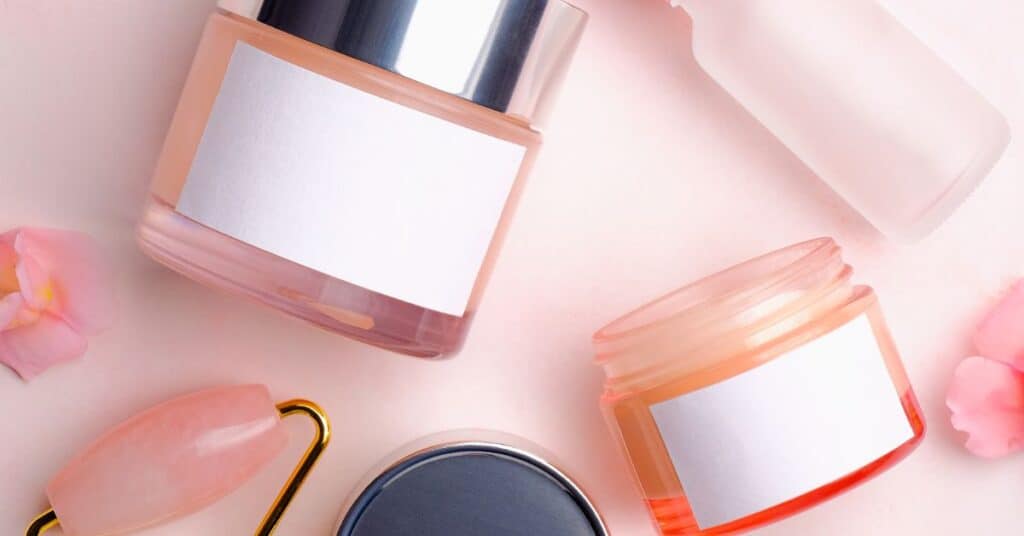Table of Contents
- How The Skin Behaves In Winter
- Winter Skincare Routine For Oily Skin?
- Winter Skincare Routine For Normal Skin Type
- Winter Skincare Routine For Dry Skin Type
- Winter Skincare Routine For Combination Skin Type
- Winter Skincare Routine for Sensitive Skin Type
- Conclusion
Are there winter skincare for all skin types? Yes! That is what I will explain to you in this article.
With the arrival of winter, our entire body feels the change at the same time.
From hair to nails, climate and weather greatly influence how we adapt to the seasons.
At this time of year, we commonly feel the first impacts on our skin.
It may appear much rougher or oily than usual or without vitality.
However, it is possible to reverse this situation with simple tips and a skincare routine that suits your skin type in winter.
Let’s start!
How The Skin Behaves In Winter
Before you start adapting your existing skincare routine for the cold, you must understand why taking this specific care in winter is so important.
Regardless of the characteristics of each skin type in women and men, winter conditions dry it out much more than in other seasons and cause dehydration.
Therefore, it is essential to provide exceptional care in winter, moisturizing much more.
Due to low air humidity and colder temperatures, it is a natural mechanism of our skin.
The loss of water through evaporation and consequent reduction in hydration is impacted, leaving the skin drier and unprotected.
Another determinant is the fact that because we are not feeling as hot as in the summer
we do not drink as much water as usual, and the skin is the first to go.
And, if you are one of those people who loves to take a hot shower to deal with the cold, be careful!
This practice, when constant, can cause a more intense removal of the skin’s natural oil.
Thus, the lipid mantle (which protects our skin from microorganisms and the loss of water to the external environment) cannot retain the skin’s moisture.
Among the main symptoms of dry skin in winter are:
> Dull and devitalized appearance;
> Peeling of the skin (especially in the nose, chin, and forehead area);
> Sensation of roughness, “thicker” skin to the touch;
> Itching and allergies (due to dehydration); It is
> Whitish appearance (which indicates denaturation of proteins).
The opposite can also occur: that is, instead of becoming drier, the skin produces more oil as a mechanism to protect against dehydration.
In this case, the hot bath encourages excessive oil production by the skin (to compensate for what it has lost), resulting in an oily and shiny appearance. Therefore, it is essential not to overdo it!
Furthermore, our diet tends to change according to the seasons.
The coldest time of the year can be a great attraction for a heavier diet, with fattier foods, sweets, chocolates, and other foods stimulating more sebaceous production.
Winter Skincare Routine For Oily Skin?
So far, we have been able to understand how water (whether drinking liquid or taking a scorching shower) has a strong influence on the appearance of the skin in winter.
The point is that during winter, the skin loses water and nutrients. The cold causes capillaries to constrict, which leads to a decrease in oxygen, moisture, and nutrients.
It’s important to note that the volume of dead cells increases under certain conditions.
If you don’t follow a winter routine for oily skin, you may experience a “rebound” effect.
In other words, your skin may produce more oil in response to the dry environment, which can lead to various issues.
Counteracting oily skin with aggressive cleansing or reducing moisturizing won’t yield the desired results.
Frequent washing with harsh soaps, medicated cleansers, and sudden temperature changes will dry out the skin too much.
Instead of an oily shine, you’ll likely end up with dull, flaky, possibly red, and irritated skin.
The best way to manage oily winter skin is with gentle cleansing and a suitable moisturizer.
Cleansing twice a day with a soap-free wash will remove dirt and excess oil, which will help prevent breakouts and that undesirable oily skin feeling.
It is better if it includes mint or tea tree extract. This removes impurities and helps seal pores. Perform double cleaning. For a better result
Moisturizing will keep your skin hydrated, and if your skin is hydrated, then your sebaceous glands don’t have to work overtime.
If you experience oiliness in the winter, you will get better results by using a light moisturizing lotion.
Drinking enough water during the day and applying Sunscreen daily is essential.
Exfoliate. It is advisable to exfoliate twice a week to remove dead cells. It is best to use non-abrasive exfoliants but deep exfoliation with salicylic acid.
It helps remove blackheads and pimples and also reduces shine on the skin.
Applying masks can be an excellent complement to keep oily skin radiant.
Masks are very convenient for refining the appearance of your skin, especially if it looks very dull.
Those made from green tea, blue agave, and calendula are highly recommended. It is best to use a mask twice a week and do this before bed.
So that after applying the mask, the skin can rest. This way, it will better absorb and assimilate the beneficial composition of the product.
Use a vitamin C-based serum that minimizes the appearance of pores, smoothes uneven skin tone, increases firmness, and diminishes the appearance of fine lines.
Winter Skincare Routine For Normal Skin Type
So, you’ve got “normal” skin? Lucky you! Normal skin is one of the lower-maintenance skin types.
It typically doesn’t require much work to prevent excess oiliness, sensitivity, or dryness.
However, you can still take some steps to ensure your skin looks and feels its best in winter.
- Cleanse your skin daily with a mild cleanser that does not strip your skin of its natural moisture.
- Consider using a gel, milk, or micellar water cleanser, but avoid clays and cleansers with scrubs.
- Apply an exfoliating toner with glycolic acid or other exfoliating acid to smooth texture and wrinkles, even out skin tone, and brighten your skin.
Twice a week is ideal for use, but do not overdo it ( just like how the body needs GLUCOSE, but too much of it causes GLUCOSE SPIKE and that bad for the brain)
- Use a hydrating serum every time you wash your face or hands with ingredients like hyaluronic acid, aloe vera, ceramides, squalene, glycerin, jojoba oil, or niacinamide.
- Apply a face mask twice a week but a day after exfoliation.
- Choose a mask that suits your skin needs, such as moisturizing, soothing, or brightening.
- During winter, moisturize your skin more frequently to prevent dryness and irritation.
- For the winter, use a thicker moisturizer with ingredients like cocoa butter, coconut oil, colloidal oatmeal, or shea butter.
- Remember to apply sunscreen every day, even in winter. The sun can still damage your skin, especially with snow glare.
- Use a broad-spectrum sunscreen with an SPF of at least 30 and reapply every two hours if you stay outside for a long time.
Winter Skincare Routine For Dry Skin Type
Dry skin in winter will require maximum hydration and nutrition.
Fragile, dull, sensitive, and wrinkled are just some of the characteristics of dry skin. There are many types of skin, but dry skin is the one that causes the most problems.
Due to low sebum production, it causes the skin to have problems with itching and redness. To combat dryness, following a beauty routine rich in nutritious and moisturizing substances is necessary.
With the arrival of colder temperatures, the beauty routine must differ from the one we use in the heat. The products must contain a higher moisturizing power,
Cleanse your skin daily with a hydrating cleanser that does not strip your skin of its natural moisture.
I recommend doing the double cleansing method; for the first cleaning, use milk or a balm cleanser; they contain ingredients to break down SPF and makeup.
For the second cleaning, you can go in with a water-based cleanser.
Hydrate Moisturizing Toner contains all these ingredients, plus Mallow Root, an antioxidant superstar.
Use a hydrating serum every time you wash your face or hands.
Look for ingredients like hyaluronic acid and glycerin and nourishing and skin-soothing mainstays like chamomile, aloe, and rose oil.
Apply a face mask twice a week but a day after exfoliation. Choose a mask that suits your skin needs, such as moisturizing, soothing, or brightening.
During winter, increase the frequency of moisturizing your skin to prevent dryness and irritation.
Use a thicker moisturizer. Look for ingredients like cocoa butter, coconut oil, colloidal oatmeal, shea butter hyaluronic acid, aloe vera, and lactic acid found in most hydrating products.
Sunscreen daily: Use a broad-spectrum sunscreen with an SPF of at least 30 and reapply every two hours if you stay outside for a long time.
Winter Skincare Routine For Combination Skin Type
Combination skin requires a delicate balance between addressing dryness and controlling oiliness.
The gel cleanser ensures effective cleansing without upsetting this balance.
Using a lightweight moisturizer on oil-prone areas prevents excess oil production, while the richer moisturizer hydrates dry patches.
The weekly exfoliation keeps the skin smooth, and the hydrating serum adds extra moisture without causing oiliness.
- Balancing Cleanser: Start with a balancing gel cleanser that gently cleanses the skin without over-drying or making it too oily.
- Use a hydrating serum.
- Use a lightweight, oil-free moisturizer on areas prone to oiliness, such as the T-zone. This helps prevent excess shine without compromising hydration.
- Richer Moisturizer for Drier Areas: Apply a richer, nourishing moisturizer.
- Weekly Exfoliation: Incorporate gentle exfoliation into your routine once a week to remove dead skin cells.
- Ensure that both dry and oily areas are smooth and radiant.
- Always finish your morning routine with a broad-spectrum sunscreen with at least SPF 30. To protect your skin from harmful UV rays.
Winter Skincare Routine for Sensitive Skin Type
Sensitive skin requires products that are gentle yet effective. The fragrance-free cleanser ensures a clean slate without irritating.
The calming botanical serum relieves sensitive areas, and the non-abrasive exfoliator promotes skin renewal without aggravating sensitivity.
The hydrating moisturizer and sunscreen offer essential protection and nourishment without compromising comfort.
Begin your routine with a fragrance-free and hypoallergenic cleanser to avoid potential irritants. Look for a mild, soap-free formula that gently cleanses without causing sensitivity.
Apply a calming botanical serum enriched with ingredients like chamomile or aloe vera. These natural soothers help reduce redness and calm irritated skin.
Incorporate a non-abrasive exfoliator into your routine once a week.
This helps to remove dead skin cells without causing further irritation. Choose a product with fine particles or chemical exfoliants.
Use a hydrating serum with hyaluronic acid, aloe vera, ceramides, squalene, glycerin, jojoba oil, or niacinamide.
Opt for a thicker, hydrating, protective moisturizer containing ingredients like ceramides and hyaluronic acid cocoa butter, coconut oil, colloidal oatmeal, or shea butter.
To lock in moisture and strengthen the skin’s natural barrier.
Finish your morning routine with a gentle, fragrance-free sunscreen with at least SPF 30.
Sunscreen is crucial year-round, especially in winter when the sun’s rays are harsh.
Avoid Harsh Weather Exposure:
Limit exposure to harsh weather conditions. Protective accessories like scarves and hats protect your face from cold winds.
Conclusion
In conclusion, winter skincare is for everyone. These simple yet effective routines ensure your skin stays happy and healthy throughout the chilly season.
A personalized winter skincare routine is not a luxury but a necessity. Each skin type demands a unique approach to combat the winter blues.
Adopting the right products and practices can achieve a radiant complexion even in the coldest months.
Remember, a well-crafted routine is your secret against harsh winter elements. Stay consistent, stay hydrated, and embrace the winter season with confidence.



